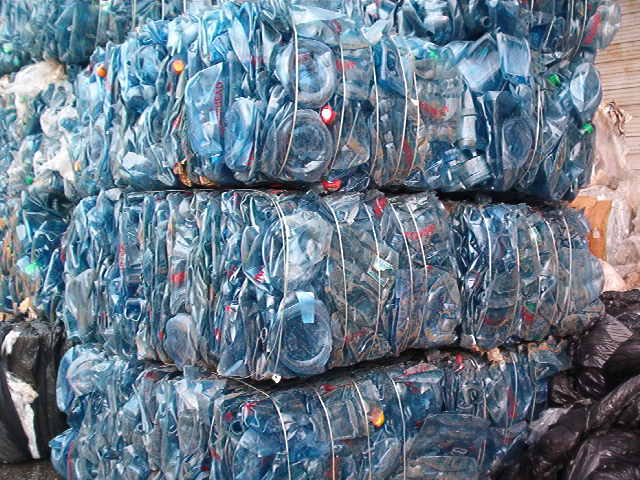
It used to be common practice on family farms to collect the kitchen scraps and leavings from the dinner table to feed the hogs. It was called slop. Quick, cheap, effective. No need to throw perfectly edible garbage away. Today most hogs are fed a prescribed diet in an industrial setting. But we saved the concept of slop and re-located it--to the nation's schools.
Through our national school lunch program, children who don't bring a meal from home are offered the leavings from our commodity agriculture system--low-grade meats, processed cheese, factory pizza--plus whatever the local school board cobbles together with some additional small change from the federal government. It amounts to $2.57 for students who qualify for a free lunch. But that has to pay for more than food. Subtract the cost of heating the cafeteria, delivering the meals, paying the cafeteria workers. As a caterer, I can tell you that $2.57 for a meal and all the infrastructure behind it is almost laughable.
Recently, Alice Waters
proposed in the New York Times that we scrap the current system and start over, adding things like fresh, local produce to the school menu, perhaps kitchens in the schools to turn these ingredients into meals and a more generous budget--maybe $5 per meal. From the
reaction of some food bloggers, you would have thought Waters had suggested serving school meals on gold-plated trays.
Kids don't need to eat local produce! It doesn't need to be prepared on site! We can do it for lots less!
The subtext being, Let's not go overboard feeding good food to children. Like Olive Twist, they can get by with less. And we certainly don't want them turning into little aesthetes, do we? (The argument must roll off the lips more easily if you've never had children.)
The overheated blather
culminated in a treacly
mea culpa from the Times' Mark Bittman, who, writing under the headline "Elitism and School Lunch," propounded that there is "a tendency among all of us who work with food regularly to become more than a little precious about it." Speak for yourself, Mark. The only thing all of this proves is that Alice Waters may be the birth mother of fresh and local food here in the U.S., but she's not the person to lead the charge on healthy school lunches. Anything she touches will be tainted as "pretentious" and "elitist"--even when she is right.
But as my grandmother would say, Waters' critics have it ass-backwards. And fortunately there are any number of concerned parents, nutrition activists, and school agitators who have formulated the question correctly: It's not how much we can afford to spend on school lunches. It's what kind of lunches we should be providing, and how much does that cost? For starters, we can look at what actually comes out of the school lunch program and why any objective observer should be appalled by what our kids are eating in a so-called learning environment.
More than 30 million kids in this country receive a lunch at school on an average day. A
study recently published in
The Journal of the American Dietetic Association found that this is the kind of mediocre stuff being dished up in the nation's lunch rooms, as summarized on the
Lunch Lessons blog:
•
Milk: Milk is offered in practically all schools. One percent fat milk was the most common milk served, and the majority of milk offered is flavored.
•
Fruit: Ninety-four percent of schools offered fruit or fruit juices. Only 50 percent of schools offered fresh fruit. The rest offered canned fruit or fruit juice.
•
Vegetables: This study considers starchy vegetables such as white potatoes a vegetable. By that classification, 96 percent of kids had a vegetable offering at lunch. But note that while 45 percent of high schools offered French fries, only 39 percent of schools offered lettuce salad, 29 percent offered orange or dark green vegetables, and 10 percent offered legumes.
•
Grains/bread: The vast majority of grain products (bread, rolls, bagels, crackers etc.) were made of refined white flour. Only 5 percent of grain offering was whole wheat.
•
Combination entrée: The most commonly offered combination entrée depended on age; in elementary school, 28 percent of combination entrees were peanut butter sandwiches, followed by meat sandwiches; in middle school the most commonly offered combination entree was pizza with meat, followed by cheeseburgers and sandwiches with breaded meat or poultry.
•
Dessert: Those were offered in 47 percent of high schools, 41 percent of middle schools and 37 percent of elementary school. The leading deserts were cookies, cakes and brownies.
From that, the kids choose the worst of the worst. This, according to the study, is what they are actually eating:
•
Milk: Seventy-five percent of kids drank milk, mostly 1 percent fat, and mostly flavored.
•
Fruit: Forty-five percent of kids ate some fruit; most of the fruit eaten was canned. Only 16 percent of kids overall had fresh fruit, and among high school kids it was only 8 percent.
•
Vegetables: Fifty-one percent of kids overall had some kind of vegetable, but that includes French fries. Lettuce salads were eaten by 6 percent of kids, orange or dark green vegetables were eaten by 6 percent, and legumes by 2 percent. French fries were eaten by 34 percent of high school kids.
•
Grains/bread: Thirty-four percent of kids had grain products. Only 1 percent of grain products eaten were whole wheat.
•
Combination entrée: 75 percent of kids selected these entrees, the most popular of which were pizza, sandwiches with breaded meat, fish or poultry, hamburgers or hot dogs.
•
Dessert: Thirty-eight percent of kids had dessert, mostly consisting of cookies cake and brownies or candy.
The problem with this picture, of course, is that the food kids consume on the school lunch plan doesn't even rise to the minimum level set forth in the federal government's own
dietary standards. And that's because this "food" is conveniently cheap, cheap, cheap--the very dregs of what our system has to offer.
By comparison, those vile French spend three times as much on their shcool lunches. And listen to
this account account of what the French kids eat:
"At one school, students were served a choice of salads — mâche with smoked duck and fava beans, or mâche with smoked salmon and asparagus — followed by guinea fowl with roasted potatoes and carrots and steamed broccoli. For dessert, there was a choice of ripe, red-throughout strawberries or clafoutis. A pungent washed-rind cheese was offered, along with French bread and water. Yes, the kids took and ate the cheese.
"French schoolchildren eat in brightly colored lunchrooms. Lunch hour includes exercise and lasts for two hours. Our second meal was a little simpler, but then, the kids were younger, too. Children served themselves a butter lettuce salad from a bowl set on the table. The main dish was mashed potatoes with a sauce of ground beef (delicious!). Bread and water again were offered as well as the pungent cheese, and a choice of fresh strawberries or a little pastry."
In France, the schools have their own kitchens, their own pantries, their own fresh ingredients. (But of course, the French also think people are entitled to free health care and we wouldn't want to be caught doing anything the sissy French way--
would we?)
So what would it cost to change the dismal U.S. menu to meet even minimal standards--cut back on the sugars, the refined starches, the salt and canned goods and introduce more healthful protein, unprocessed fruits and vegetables, whole grains? That, of course, is the million dollar question. But does it really matter? Could we swallow $5 a meal if that's what it took? Or $6? Or $8?
No, the ingredients for wholesome meals don't have to arrive fresh off the farm. But agriculture Sec. Tom Vilsack has said that introducing more fresh, local food into school meals is a goal of the Obama administration and he is supported by a broad segment of farmers and food activists. There are many good reasons to support local agriculture. Using it to feed school children is just one of them. Could the meals be cooked off-site? Certainly. Schools could go on as they are, serving mainly as heat-and-serve stations. But obviously the French manage to do it and the British think in-house cooking is important enough that they have mandated cooking classes for all secondary school children by 2011. There are even
programs right here in the U.S. that take food and children seriously. As someone who regularly teaches kids about food--where it comes from, why we eat what we eat, how to cook it--I can tell you that children are keenly interested in the subject. You might be surprised how many routinely watch
Food Network and
Iron Chef.
Do we care enough about our kids to feed them good food? The old axiom applies: garbage in, garbage out. If we feed our kids slop, we should expect them to continue eating slop when they grow older. No, what we feed children does matter, and we should stop training them to be our future diabetics and cardiac patients. (Many of them are already showing the symptoms: 40 percent of the children in the study cited above were overweight.) It's not only time we fed them to be healthy, but taught them about food as a life lesson they will carry with them into adulthood. If President Obama is serious about children and school lunches, he should make revamping the school lunch program a priority. Appoint a White House commission to draw us a blueprint for doing exactly what Alice Water suggested: scrap the school lunch program and replace it with something our kids deserve.
Then tell us how much it will cost.
 Swiss cheese omelet with Canadian bacon and onion tops.
Swiss cheese omelet with Canadian bacon and onion tops.







































